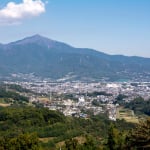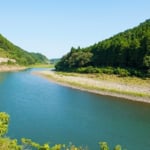Name: Diocletian's Palace
Address: Old Town Centre, Split, Croatia
Official Split Website: https://split.hr/
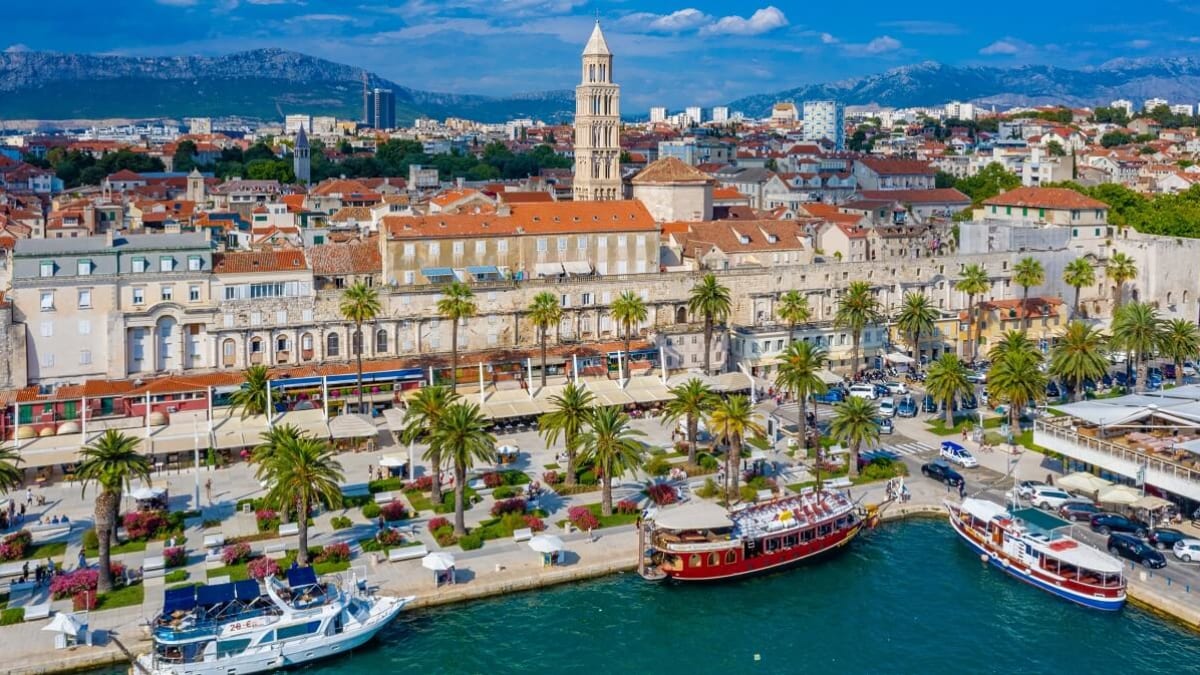
8 Recommended Tourist Attractions in Split, Croatia – A UNESCO World Heritage City
Split, the second-largest city in Croatia, is a unique town where the ruins of a Roman emperor’s palace have become the old town itself. The city is rich in historical architecture and was designated as a UNESCO World Heritage Site in 1979. Alongside Dubrovnik, Split is one of Croatia’s most popular tourist destinations.
The cityscape of Split, where ancient, medieval, and modern times intersect, combined with the breathtaking view of the blue sea, captivates every visitor. In this article, we introduce eight must-visit tourist attractions in Split, Croatia.
table of contents
[x] close
8 Recommended Tourist Attractions in Split, Croatia – A UNESCO World Heritage City
1. Diocletian's Palace
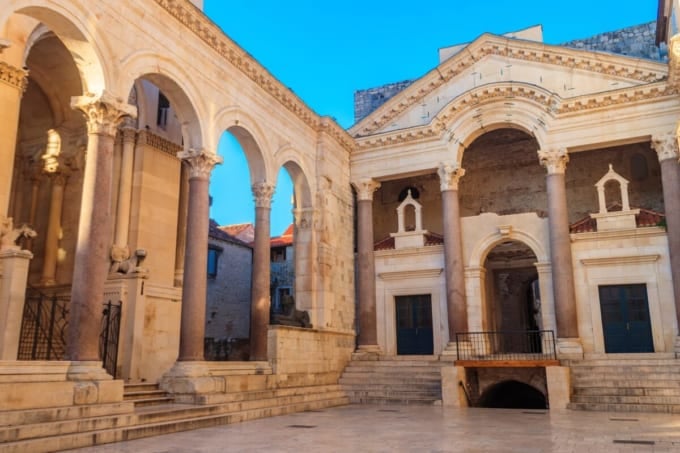
Diocletian's Palace is the ancient Roman emperor Diocletian’s residence, built in Split between the late 3rd century and early 4th century. Emperor Diocletian, known for persecuting Christians, abdicated in 305 AD and built this palace to spend his retirement.
The palace is divided into four sections. The southern half was the emperor's private area, with a courtyard in the center, a mausoleum, and a temple. The southernmost section was used as the emperor’s residence. However, when the Roman Empire fell in the 5th century, the palace became abandoned. By the 7th century, people began settling within its ruins.
The citizens of Split boldly remodeled the palace and transformed it into their town. Interestingly, the emperor's mausoleum—built by a ruler who had persecuted Christians—was later converted into a Christian cathedral. It is ironic that, in death, he had no choice but to "watch over" the Christians. Today, the palace serves as Split’s Old Town and is a major tourist attraction.
2. Silver Gate
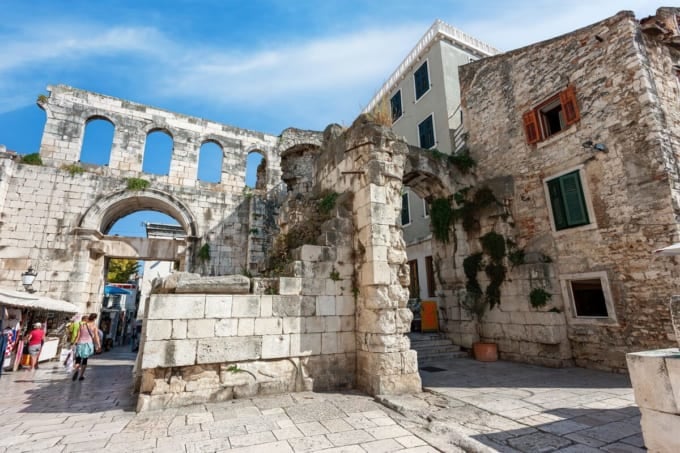
Diocletian’s Palace has four main entrances facing east, west, north, and south, named the "Silver Gate," "Golden Gate," "Bronze Gate," and "Iron Gate."
If you arrive in Split by long-distance bus, the first gate you will pass through is the Silver Gate. This area is lined with souvenir stalls and an open-air market, often referred to as Split’s “stomach.” Here, you can find fresh vegetables, fruits, and Croatian specialties such as honey and dried figs, which make great souvenirs. Shopping alongside the locals is a great way to start your visit.
Split is a small city, so you can explore its main attractions at a relaxed pace within a day. Take your time here before venturing to other sights.
Name: Silver Gate (Srebrna vrata)
Address: Old Town Centre, Split
Official/Related Website: http://www.visitsplit.com/hr/522/srebrena-vrata
3. Marjan Hill
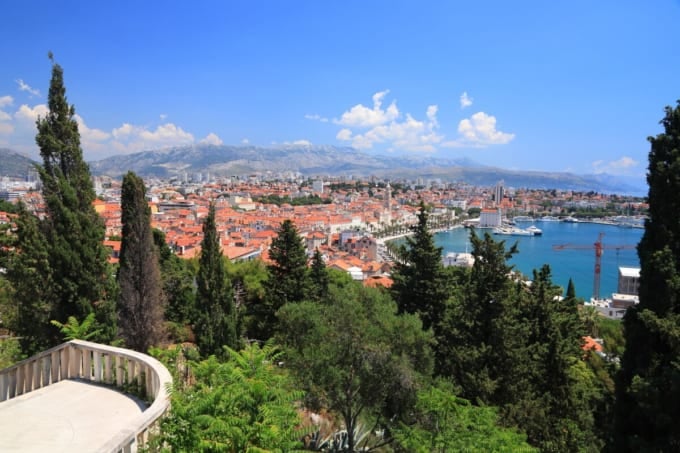
Located on the west side of Split’s Old Town, Marjan Hill is a panoramic viewpoint offering breathtaking views of the entire Old Town and the Adriatic Sea. If you walk straight down the Riva promenade, you will reach a staircase leading up the hill, where you can enjoy this stunning scenery.
Many of the iconic Split photos found in travel guides were taken from this hill. Surrounding the hill, you will also find medieval Jewish cemetery ruins, chapels, and even a small zoo. It’s a great place to explore while in Split.
Name: Marjan Hill (Marjan)
Address: West of Split, Split
4. Underground of Diocletian’s Palace
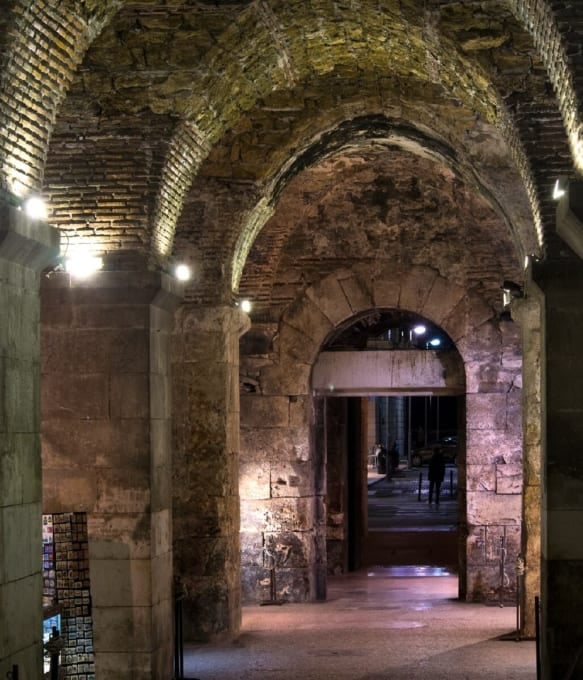
Beneath Diocletian's Palace lies a vast underground space known as the Underground Palace. In ancient times, it was used for wine and olive oil production and also served as a storage area. Today, it has been converted into a shopping area filled with souvenir shops where you can find unique gifts from Split.
Part of the underground area is now a museum space, showcasing Roman-era water pipes, tables, a bust of Emperor Diocletian, and medieval olive oil presses. Since it was buried underground for centuries, the site remains well-preserved, offering a rare glimpse into life in Roman times. Be sure to visit this fascinating historical site.
Name: Underground of Diocletian’s Palace
Address: Old Town Centre, Split
5. St. Domnius Cathedral
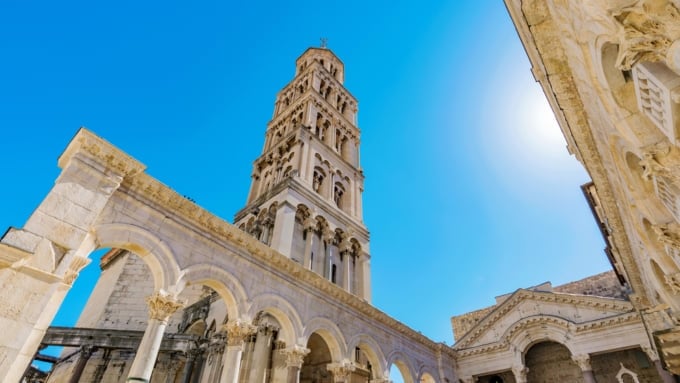
St. Domnius Cathedral was originally built in the early 4th century as the mausoleum of Emperor Diocletian. Initially, the emperor’s sarcophagus was enshrined here, but in the 7th century, the people of Split destroyed it and transformed the mausoleum into a Christian cathedral. The emperor's remains have been lost to history.
Despite its simple exterior, the cathedral’s interior is majestic, with an altar considered one of Croatia's finest religious artworks. The cathedral doors feature Romanesque carvings depicting 28 scenes from the life of Jesus, from the Annunciation to the Ascension, making them a masterpiece of medieval sculpture.
The bell tower of St. Domnius Cathedral is one of Split’s most iconic landmarks.
Name: St. Domnius Cathedral
Address: Old Town Centre, Split
Official Website: https://visitsplit.com/en/527/cathedral-of-saint-domnius
6. Temple of Jupiter
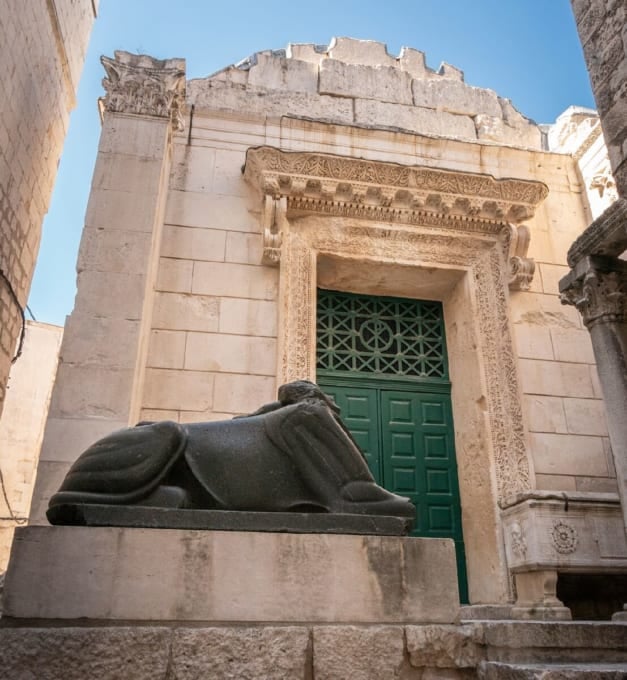
Some travel guides refer to this site as either the Temple of Jupiter or the Baptistery, but they are the same location. Originally built by Emperor Diocletian as a temple dedicated to Jupiter, the highest god in Roman mythology, the structure was later repurposed as a baptistery after Christianity spread throughout the region.
At the entrance stands a statue of St. John the Baptist, created by the renowned Croatian sculptor Ivan Meštrović. The baptismal font in front of the statue features an engraving of a Croatian king. Take some time to examine these fascinating details.
Near the entrance, you will also find a headless sphinx, and right next to the baptistery is what is known as the narrowest street in the world.
Name: Temple of Jupiter
Address: Old Town Centre, Split
7. Riva
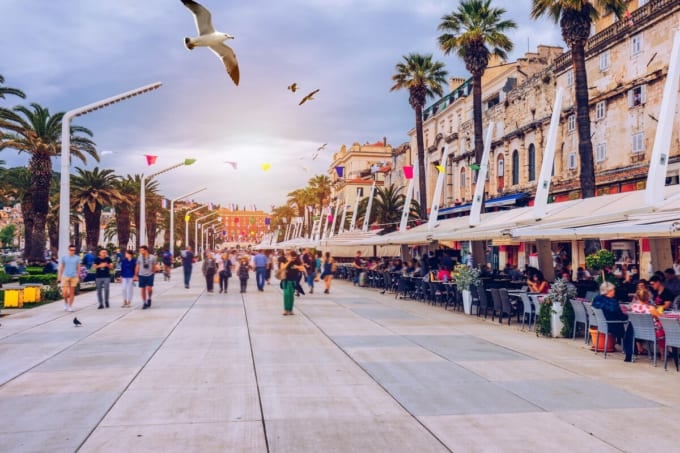
The coastal promenade Riva, located along the southern walls of the palace, is one of the most vibrant spots in Split. This scenic area is lined with palm trees and numerous cafés with outdoor terraces. It’s the perfect place to take a break, enjoy a cup of coffee, eat cake or ice cream, and simply relax.
Riva is bustling both day and night with locals and tourists alike. If you walk straight from here, you'll reach Marjan Hill, where breathtaking views await. The promenade also has a walking path along the sea, making it ideal for both sightseeing and leisurely strolls. Behind it, the Old Town spreads out, making Riva a central hub for exploring Split.
Name: Riva
Address: Riva Split
Official Website: https://visitsplit.com/en/512/the-riva
8. Grgur Ninski Statue
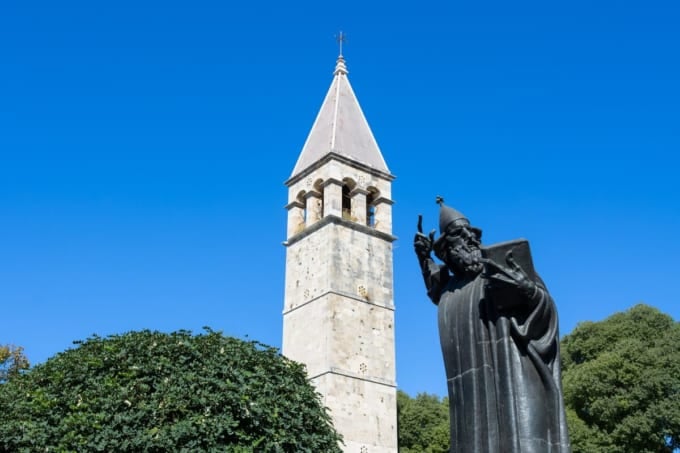
The Grgur Ninski Statue is a massive bronze monument standing in front of the Golden Gate, on the northern side of the palace. This statue honors Bishop Grgur Ninski, a historical figure from the 10th century who introduced the Croatian language into church services, helping to preserve the Slavic language.
It is said that touching the bishop’s left toe brings good luck, making the statue a popular attraction for visitors. Nearby, you can find an antique flea market, where you can browse ceramics, vintage tableware, Roman-era coins, and relics from the former Yugoslavia.
Name: Grgur Ninski Statue
Address: Old Town Centre, Split
Official Website: https://www.nin.hr/en/interesting/grgur-ninski
Summary of Recommended Tourist Spots in Split
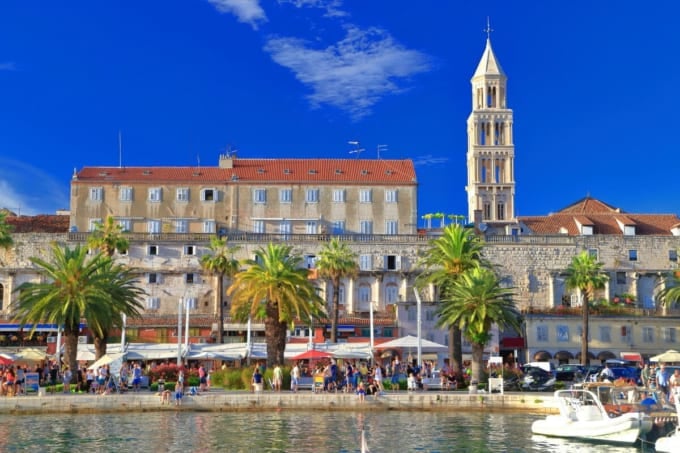
Isn’t it fascinating to visit a city built within ancient ruins? Split is not only a historical treasure but also a food lover’s paradise, known for its delicious Italian-influenced cuisine. The city is also a great place to shop for unique souvenirs.
From Split, you can easily explore nearby islands, making it a fantastic travel base. One of the must-visit attractions nearby is the world-famous Blue Cave—be sure to add it to your itinerary!
RELATED ARTICLES
REGIONS
CATEGORIES
FEATURED ON Croatia
-
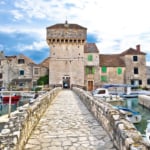
Introducing popular souvenirs from the ancient city of Split, full of history!
-
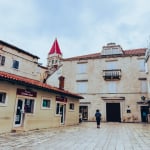
「Historic City of Trogir」 Croatia’s UNESCO World Heritage Site with Stunning Medieval Streets
-
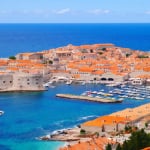
20 Recommended Tourist Spots in Croatia | A Beautiful Country Facing the Adriatic Sea
-

[2023 Fall Edition] 15 Must-Visit International Travel Destinations – From Classics to Hidden Gems
-
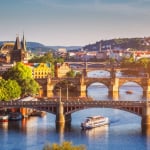
Step Into the World of Your Favorite Anime! Stunning Cityscapes That Inspired Popular Series
MOST POPULAR ON Croatia
-
 1
1Doha: Must-see Attractions in the Capital of Qatar
-
 2
2Toronto: 10 Things to do in this Picturesque Canadian City
-
 3
3Amarillo: A City Famous for It’s Amazing Canyons, Great History and Music
-
 4
4South Korea: Dazzling Scenery, Rich Culture and Fascinating History
-
 5
5Kuwait: A Country in Middle East Asia Famous for Hot Sand Dunes and Stunning Cityscape

